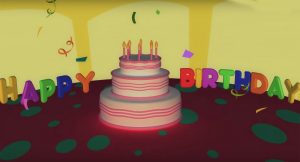This may not come as a surprise to those of you that have made the trek already (several times) but some people can not even conceive of actually making the trek to BsAs. They wish they could go, but due to their current circumstances, they can’t. Read that as: Their job, their spouse, their children, their mortgage, their tax payments, their car payments, their ‘whatever’ prevent them from making the trek.
Here’s the kicker: They don’t need to go.
What ?
This may come as a shock to some of you reading this especially because it runs counter to the belief system that has grown up around Tango. Because Buenos Aires (BsAs) is the center of all things Tango, so how could anything be better than that ? Well, first it’s not the only center of Tango. Secondly, as a form, Tango is changing…constantly. Tango, for example, in Europe, has surpassed, in many respects and by many accounts, the quality of dance in BsAs, and one might argue the frequency, as well as the diversity of tango in BsAs, is being rivaled in the EU as well as Russia and Turkey.
Don’t miss hear that as:
a.) This author is down on going to BsAs…or
b.) It’s a complete waste of your time.
c.) That Tango in X is better than BsAs (it is to a certain degree, and then not from a certain perspective….it’s just different. We’ll get into that later!).
None of those things are true, to a point…
To be clear: You do actually need to go, at least once, to get a feel for it.
So which is it ? Don’t go. Or, do go, at least once. The operative word is ‘need‘ here. No one needs to go to BsAs. It’s a want more than anything else.
However, if you go, you must go for longer than 2 weeks. 2 weeks won’t even make a dent in your BsAs experience & education. And in this instance, it is a waste of your time under those circumstances. Why ? Because you’ll be rushing from place to place, shoe shopping, milonga hopping at the wee hour, you’ll be sleep deprived, and let’s not forget the secondary reason you’re there: To take privates and to study with your favorite Tango luminaries! You’ll have barely enough time to think let alone actually absorb anything in said study time with said Tango luminary, assuming you can actually get time with them to begin with. Mostly you’ll just be getting yourself acclimated to the sounds, the places, the scents, the food, the lack of sleep more than anything else to actually absorb and let it filter into you and your nervous system. Under these conditions, it is a taste of BsAs, a very expensive taste in time and money for two weeks. Two weeks sounds like a lot, it’s not. It’s short by BsAs time standards.
Understand something: BsAs runs at a completely different speed than the rest of the world, especially with respect to tango. It is filled with different people from a different mindset than your own. And for some people it is seemingly out of normal time. Things are different there.
So what is a long enough period of time to spend in BsAs ? A month ? A month will get into the scene that is dancing in BsAs. Two months ? Two months will allow you to find your own groove in BsAs. Meaning your personal rhythm of tango education, food, time spent dancing., sightseeing, getting familiar with partners, shoe shopping, regular classes and regular privates that aren’t rushed. Three Months ? 3 months! In that period of time your dancing will have changed towards the flow that is dancing every day, and every night at Canning, or La Viruta, or the barrio milongas in BsAs. Three months is the perfect time.
And one more thing you need to understand if it’s not clear: Tango is DIFFERENT in BsAs than it is elsewhere. Very different. But it is no better, or worse, than your local milonga where you live. Yes there is more of it, yes there is better dancers, yes there is an actual line of dance, and yes there is adherence to codigos. However, the opposite of those things are also true in Buenos Aires as well. More on this later.
Speaking of which: This is something that you’ve heard in whispers, in gripes, in messages, in postings, in the soundings of what appears to be arrogance (“you need to be there to understand”), it’s also something that you will more than likely not get for a long, long, long while for a long and varied number of reasons:
Dancing In BsAs is very different than dancing anywhere else in the world. It’s smaller, more compact, tighter, seemingly much faster (this is an illusion), takes up less space. And so that we’re clear, it’s not the quality of dance. Nor the frequency of dance. However, those things do contribute to the dancing immensely, and to why it’s different. The difference some would argue is the embrace, the understanding of the music, the seeming ease by which it occurs ‘there’ vs. where you live. All of those things are valid, but there’s one thing that makes Tango in BsAs very different.
In OUR opinion the biggest reason why it is different has everything to do with physiological, mental, and emotional awareness on multiple levels, and something in physics which is called ‘Laminar flow’. Which means that fluid travels smoothly or in regular paths, in contrast to turbulent flow, in which the fluid undergoes irregular fluctuations and mixing. In Laminar flow, the velocity, pressure, and other flow properties each point towards the fluid will remain constant. And all the other properties align towards that constant. From a tango perspective, it means that your abilities, your awareness, your perception of the music, your kinesthetics, your nervous system aligns towards a heightened state of readiness so that you’re able to react in time to what’s happening.
It should be noted that most people attribute that awareness to better dancers, and/or amazing teachers, etc. Again, this boils down to awareness of a different kind but it’s still awareness: Hyper-Awareness on multiple levels all at the same time.
So if you’re lamenting that you can’t go. Don’t lose sleep over it. You’re only missing a few tandas that you’ll stress out about, a few classes that will otherwise change your dancing life if and only if you had the presence of mind to practice what you’ve acquired religiously without error (not going to happen, you’ll backslide and misremember 90% of what you were told), and you have the time to let it sink in and actually dance it. You’re only missing a few partners (not argentines, not porteñas) that may have the potential to blow your mind, or the polar opposite…underwhelm you to the point of sleep. Put this another way, you’re flying half way around the world to sit at a milonga with 400 other people that are all looking to dance with the same 20 people in the room. And those same 20 people don’t even know you exist, nor are they going to either. Oh and those same 20 people ? They’re either teachers or they’re teacher class dancers (meaning someone that could teach but chooses to social dance at the higher levels), and they’re only looking for a quality experience with a very specific type of dancer…very specific. And, sadly, more than likely, that’s not you unless you’ve spent every waking moment cleaning up your form for the last 5 years of your life. Every nuance, every detail, every error, every thought…has been tango. So unless that’s you….not so much with that.
The Tango Topics Opinion: Let’s get something straight. No matter what this article states, you’re going, at some point, or have been. Those that have been already know what BsAs is about to a degree. Those that went for 2 weeks, can easily attest nearly everything that this article has stated and then some. Those that haven’t been can only imagine the experience that awaits them. However the purpose of this article to not to bash going to BsAs, nor the people that want to go. It’s purpose to relax the anxiety around going at all. The reason why is a little convoluted but you might want to know why this was written….if so, read on.
Over the last few years that this author has been traveling, teaching, and dancing worldwide, there are a few things that have created some clarity about Buenos Aires and the desire to go there. Like most people the author started out with a reverence for all things BsAs. Any dancer, any music, anything that could come from there, or people that had been there and could share any insights. But due to circumstances (at the time) couldn’t go himself. However, as time passed and he actually went to BsAs more than a dozen times over a 5 year period, BsAs eventually lost its luster. It was just another city where Tango was danced. There was just more of it there, and often. After a few more years, and a lot more dancing, and a lot more teaching, and experiencing what’s happening in the rest of the world, tangowise, it became clear that the desire to go there was entirely manufactured right from the first moment. Still, another was that surely the first time was purely for the romance of the experience, and not to actually change the author’s dance. Mind you it did change the author’s dance but not on the first trip and not on the second one either. It was the 3rd trip where the trip lasted for more than 3 months that the author’s dance really changed, became smaller, more compact, more interpretive of the music because it had to be, not because of some class or workshop. It changed because of the environment that he was dancing in, not because of the classes or seminarios. Don’t mishear that the seminars weren’t helpful, but the change the mattered the most came from social dancing every day for hours on end. But due to the fact that he already had a skillset that was based in analysis, the ability to change came easier than it does to others. So in this respect, BsAs was helpful. If the author hadn’t gone there, would his life be any different ? No. He still would have traveled, taught, and danced. The devil is in the details, always. What changed then ? The where he traveled to changed. The what he talked about when he taught and then how he taught it changed. The topics of this website are a reflection of that experience to a degree. And lastly how he danced, it became small, tighter, more compact and far more musically interpretative.
So now you know.
If you’re going, soon, stay longer. A lot longer: 3 Months. Nothing less than that. You’ll be thankful you did. And also if you’re going…we’re going to put in a shameless plug for the matierals that we’ve created just for that purpose:
Ok now that you’ve over that. Go book your tickets for the EU instead, hang out in Europe and Moscow (leads) / Milano (followers).











